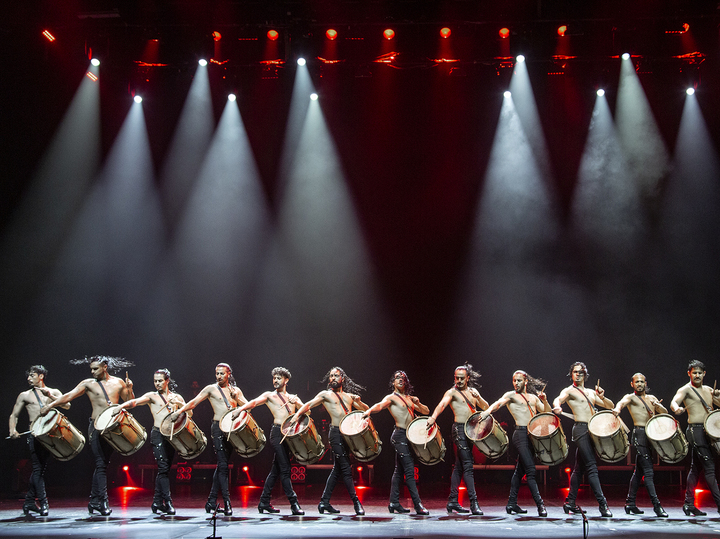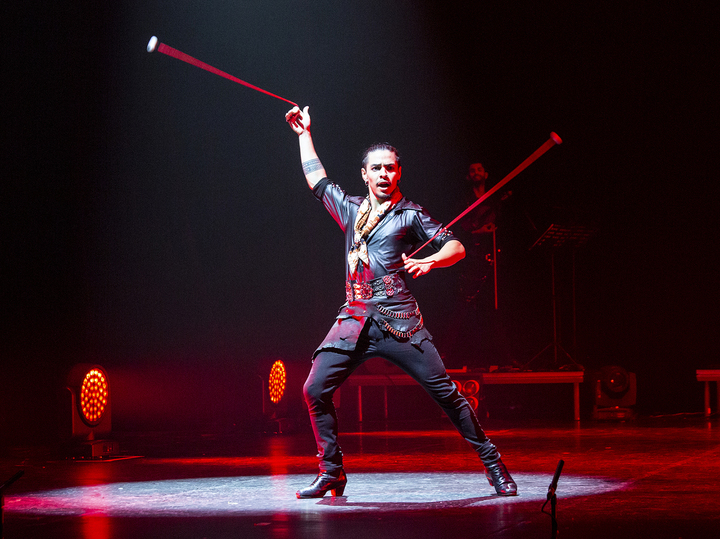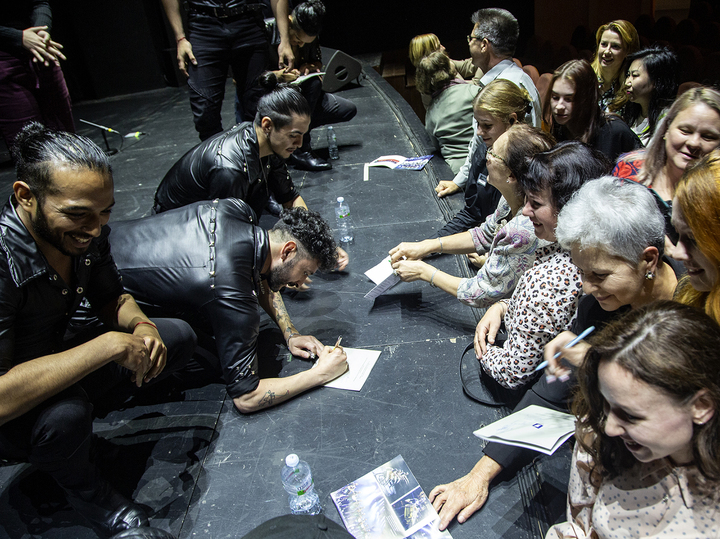The Chekhov Festival was closed by the “bad guys”
[ad_1]
The current Chekhov Fest was dedicated to the memory of Valery Ivanovich Shadrin, the creator and general director of the Chekhov Festival from 1992 to 2022. The program included sections “World Series”, “Chekhov Festival on the Streets of Moscow”, “Moscow Program”, “Educational Program”, “Regional Program”, as well as street photo exhibitions dedicated to the thirtieth anniversary of the ITF. A.P. Chekhov.
The “World Series” of the 16th Chekhov Fest consisted of 15 performances of different genres from 13 countries – Argentina, Armenia, Belarus, Brazil, Vietnam, India, Kazakhstan, China, Cuba, Kyrgyzstan, Uzbekistan, Chile and South Africa. Real Argentine tango, Indian drama and Chilean ethno-plastics, Vietnamese water puppet theater, South African dance “Requiem”, Chinese “Tea Spell”, large-scale Cuban-Russian project “Carmina Burana” and finally the Argentine dance show “Malevo Extreme” – all this and much more the audience at the Chekhov Fest this year saw something else.
It was not in vain that the performance “Malevo Extreme” was chosen as the final point, or rather the exclamation point, of the current Chekhov Fest. And the prefix “extreme” is in the title of the play for a reason. The show was truly extreme and exhilarating.
Despite the fact that the performance is based on Argentine national folklore – the typically male folk dance of the gaucho – the atmosphere of a rock concert reigns on stage. Located on a platform and illuminated by spotlights is a musical installation with percussion instruments (in addition to the drummer, four musicians play the violin, guitar, and, of course, bandoneon), and on the stage there is a riot of male flesh, 13 “bad guys” dressed in leather pants with bare torsos (so you can translate the name of the troupe Malevo) with African drums at the ready, beating out the rhythm with their heels.

The show is based on the national dance Malambo. The dance was born in the Argentine pampas around 1600 and is almost 500 years old. It is the oldest in Argentina. In our country, this dance has been known since the 50s, performed by the Moiseev ensemble. Malambo has no vocal accompaniment, and the music to which it is danced is all about rhythm. The dancer performs a series of leg movements in a very confined space. These combinations of leg movements are called “mudanzas”. Each “mudanzas” is unique. The winner of the malambo competition is the one who can perform the most varied and most complex “mudanzas”. And the dancers of the Malevo troupe do this best of all in Argentina.
The drum sound was added to the malambo in this show specifically for added effect.
— Bombo drums produce a characteristic dull sound. This drum can be heard for several kilometers because its sound was previously used to notify populations located approximately 5 kilometers away. This drum sounded, for example, if someone died or people were called to some kind of celebration. The drums are of African origin, and the tradition is similar to old African dances, when the whole tribe gathered around the fire to the sound of such a drum,” the founder, director and choreographer of the group, Matias Jaime, tells me.
The word “malevo” comes from a special type of dialect characteristic exclusively of Argentina – Lunfardo, this is the language of emigrants and gypsies, which originated in Argentina and means “malevo” – “fighter”, “warrior”. Sometimes translated as “bad guys”. And malambo is a typically male dance, with the help of which gauchos proved their dancing prowess and strength.
— The members of our team are truly warriors. They follow our dance path, fighting. We are fighters. We put this meaning into the name of our team.
The team was created in 2015, already in 2016 it took part in an Argentine television competition and immediately received recognition: doors to all shows were opened, followed by tours around the world. The Malevo troupe even danced in an open area near the Eiffel Tower in Paris.
At the age of 16, Matthias began dancing. Studied classical and modern dance, flamenco.
“Malambo for me is my life,” he says. — At the age of 16, I started participating in competitions, took classical lessons, and performed in various groups. These were mainly tango groups, where I had a solo number in which I performed malambo. And all the time I was thinking about how I could move away from these classics and devote myself to malambo, which, along with tango, is the personification of traditional Argentine folklore. Therefore, over time, I began to gather a team around me.

I went to competitions, dance championships, and met someone during my professional studies.
Several generations ago, malambo was a popular dance in Argentina. It created a real sensation and was danced by various groups, performing all over the world as part of circus performances. But then the fashion for malambo passed.
“Our idea was to win over a new viewer who may not even know about the existence of such a traditional dance. Tango is known all over the world, but malambo is not. It has been my dream since I was 16 years old that malambo would regain popularity and become recognizable all over the world. We wanted to bring something new to it, along with classic elements that remain unchanged. So we added the sound of the drum, as well as the zapoteo and boleador,” the troupe’s director continues his story.
Indeed, the show combines seemingly disparate dance traditions: zapateo, a rhythm that is beaten with the feet, and boleadora, special balls on a rope that the dancers wave. It was originally a stone wrapped in a piece of leather that was used for hunting to catch prey. They are spun, thrown, and they entangle the animal’s legs.
And in their dance, the gaucho “bad guys”, the peculiar Argentine cowboys from the Malevo troupe, seem to be going out hunting. Only now they are not hunting for animals at all. Malevo dancers all over the world are called not so much “gaucho Argentinos” as “macho Argentinos”. Because the “sex saw” simply hits the eye in this show, both in the appearance of the dancers and in the presentation of the dance.
As you know, macho means “male” – an aggressive, brutal man with great attractiveness. It is with this pronounced charisma that the “bad guys” catch the spectators of the Mossovet Theater into their nets…

Before us is a well-constructed dance show filled to the brim with eroticism mixed with machismo, in which the main element, at the same time, remains the traditional Argentine folk dance Malambo, which has gained fame and recognition throughout the world thanks to the light hand of this group. Here it was Malevo that were the first, although now a considerable number of their imitators are already appearing in Argentina.
Why do only men dance? Because malambo, as already mentioned, is traditionally a male dance, and only men danced it.
“We wanted to preserve this essence of traditional dance. Although in Argentina there are already malambo competitions for women, and perhaps we will invite women for some of our future projects,” says Matias Jaime.
— What should a dancer be able to do for you to take him into the troupe?
— As can be seen from the performance, in our preparation of the show, Zapateo plays a significant role. We are constantly working on it, and we definitely need to achieve clear synchronization with the musical accompaniment. It is very important to have technique and complete physical control of the body for each movement. We also add some elements of classical steps from classical dance, which we also constantly practice, and this is also included in our daily training.
—Where do your dancers come from? Do they have professional dance training?
— No, all members of our team are folklore dancers and malambo in particular. They are, one might say, malambo experts. This is a dance that is passed down from generation to generation. Maybe in classical dance universities they teach the basics of zapateo and some technique, but mostly we learn in the areas where we live: on the street, from our teachers, during competitions. That is, there is no classical school of malambo as such.
[ad_2]
Source link






